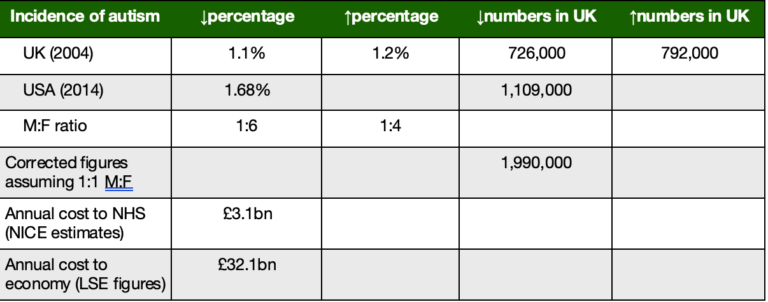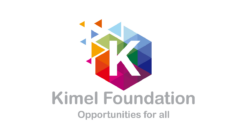Economic Impact
01.
— The statistics
Compiling such a report is fraught with difficulties due to…
02.
— The problems
- finding current up to date statistics
- finding peer reviewed verifiable figures without justification bias
03.
— Sources
The figures used are the latest available published figures from reputable verifiable sources.
The latest NHS figures are based on a 2007 study of 2004 surveys in Leicestershire, Lambeth and Sheffield in private households and communal care facilities. This did not include a prison population as to include these figures would, it was thought, artificially inflate the results.

This first table indicates the lower percentage estimates, higher percentage estimates and how that relates to 2017 according to the Office for National Statistics.
More recent figures from the USA (source: Johns Hopkins Bloomberg School of Public Health) in 2014 suggest 1.68% of the population as being autistic implying that in the UK in 2017, potentially 1,109,000 are autistic.
The ratio between male to female has traditionally been reported at between 1:6 and 1:4, however current thinking is that it is probably more like to be 1:1 as there is a greater economic driver to diagnose boys and girls “hide it better”. Assuming 1:1, this would imply 1,990,000 or nearly 2 million involved in the UK.
This is all based on 2004 figures in the UK and 2014 figures in the USA.
Current estimates in the USA are now verging towards 10-12% of the population being involved which would in turn imply 6.6 million – 7.92 million in the UK potentially involved after correction for the inequality in sex ratios.
The message therefore is, this is a growing problem hampered by lack of resources, adequate contemporaneous data and economic pressures against diagnosis as this would have an economic impact to both health, education and social services.
